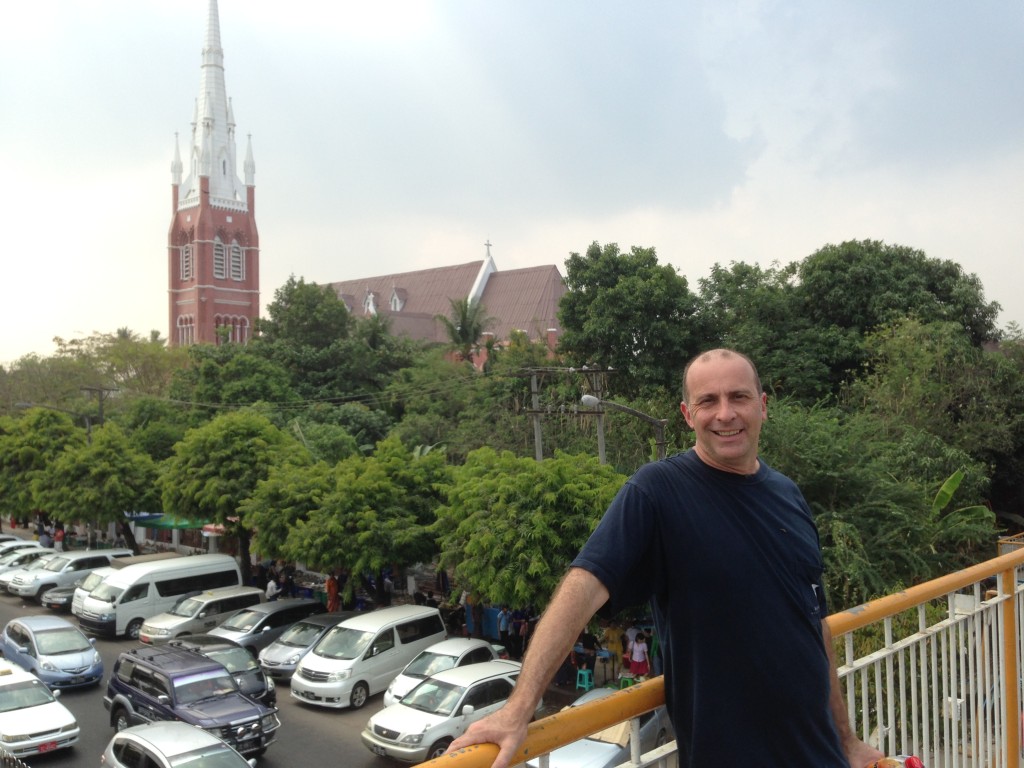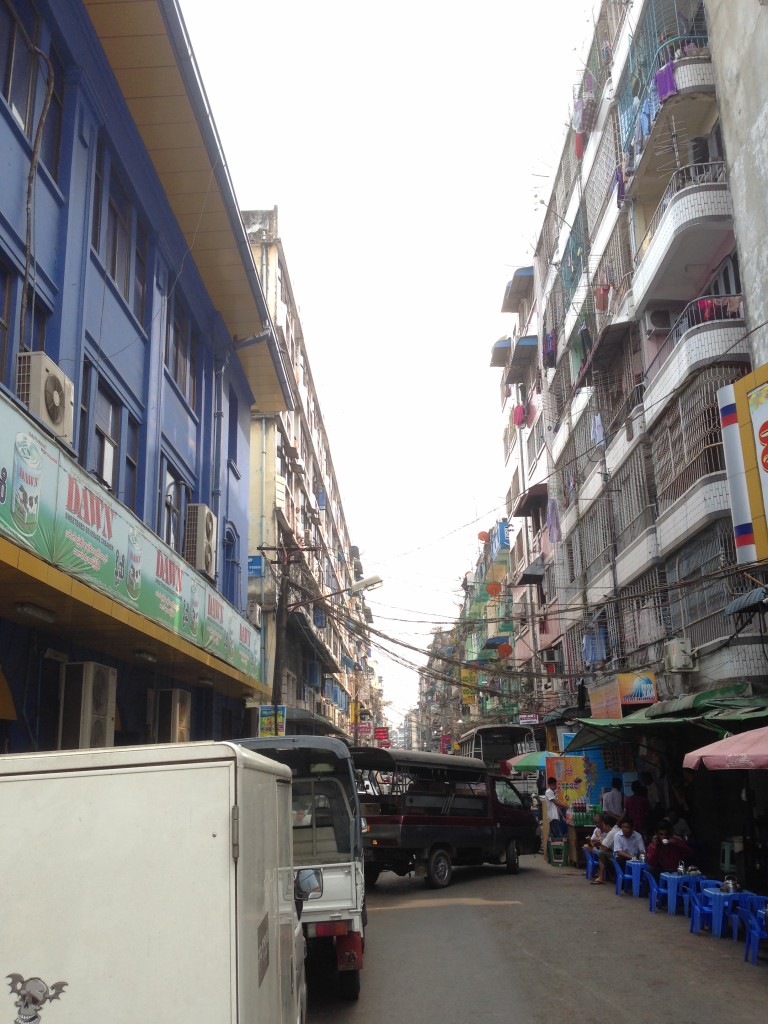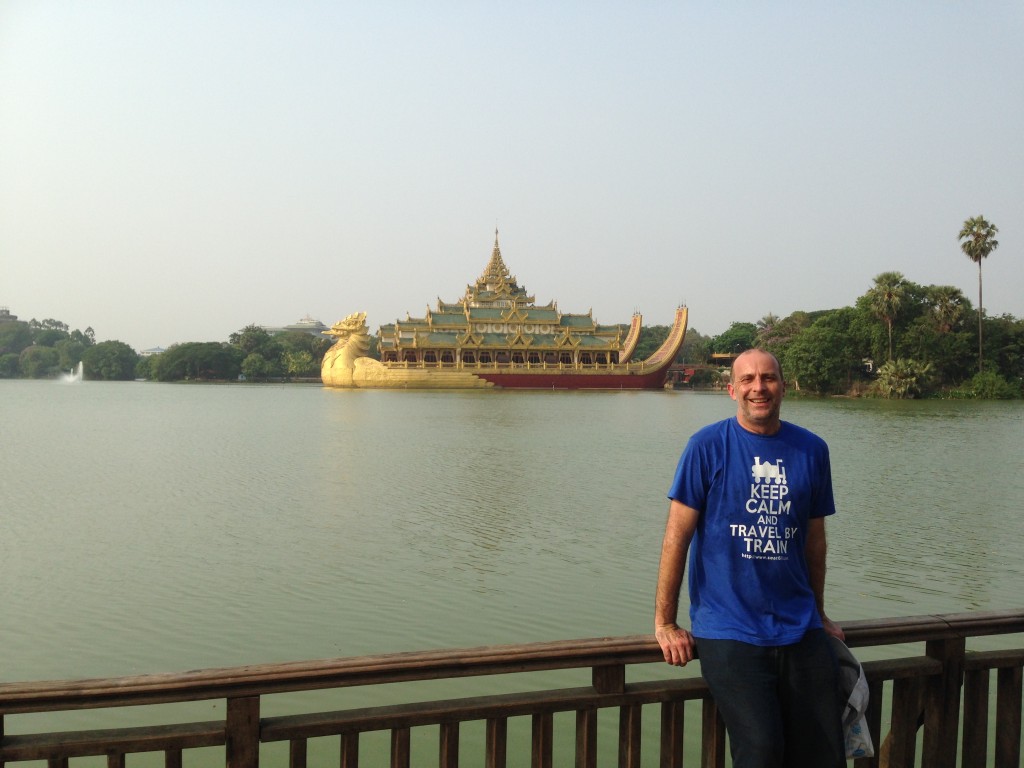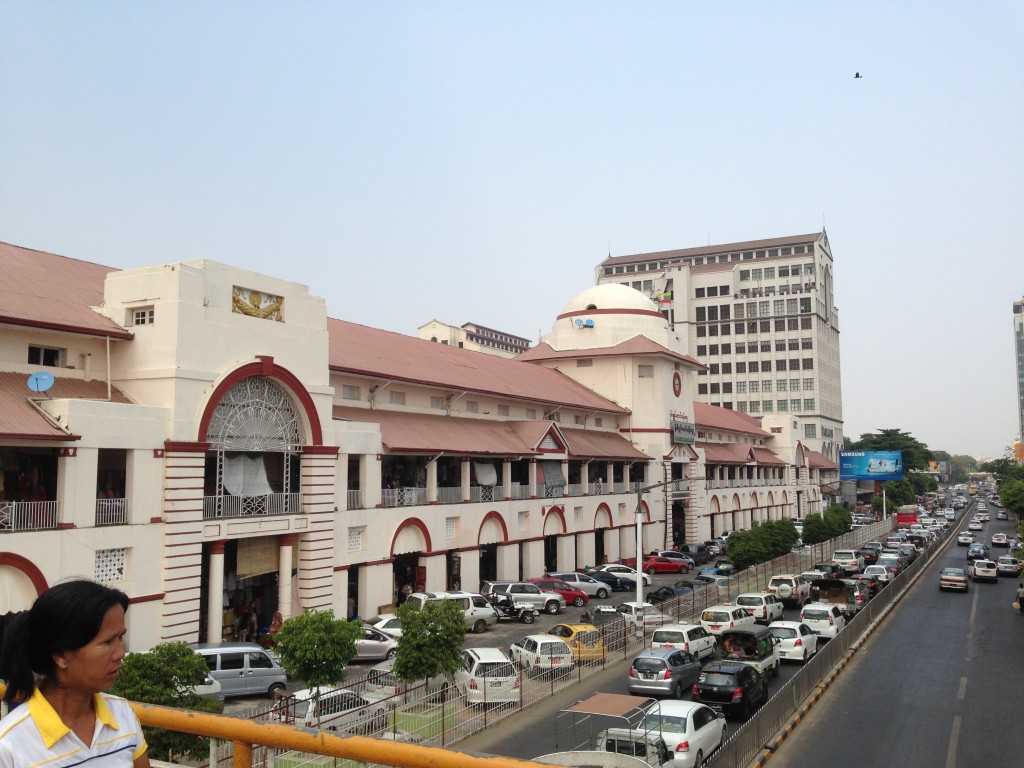When I was a child, Rangoon was one of the exotic cities of the world talked about in books and poems: mysterious, adventurous and colourful. I have long wanted to see the place for myself.
Verdict
Regular readers will know, I rate every city I visit.
My Overall Rating: 68%
Ranking out of my top 200 Cities: 155th place which gives it a similar ranking to Milwaukee, Wisconsin and Richmond, Virginia in the USA.
The Economist Ranking: not ranked
Why it should be visited: Stunning architecture, easy to get around, brilliant museums, great art, food and culture scene
Negatives: Expensive hotels
Orientation
It was founded in 1755 by King Alaungpaya who gave it the name Yangon, meaning ‘End of Strife’. The name was Anglicised by the British when they annexed the country as Rangoon. Today, the city is a mix of British, Burmese, Chinese and Indian influences. In 1989, when Burma became Myanmar, Rangoon returned to its original name of Yangon.
Then in 2005, Yangon was stripped of its capital status with the capital relocated to a new greenfield site called Naypyidaw or “Home of Kings.” The moves and changes do not seem to have made much difference to Yangon. Yangon, has an estimated population of five million compared to a estimated 900 000 in the new capital. It continues to be the the most important commercial centre and embassies have not moved. Most media including newspapers and TV are centred in Yangon.
Of course, most tourists go to Yangon and few go to Naypyidaw. We were amongst them in skipping the new capital instead flying to Yangon from Bagan.
Greater Yangon sprawls over an area of almost 600 square kilometres (230 sq miles). The city has almost doubled in size since 1985 with the city moving north from its old borders. Areas that were fields and parks have been paved over as the city has expanded. The geographic centre is now way north of the downtown area putting pressure on transport and infrastructure.
I would divide Yangon into four parts:
1. Downtown Yangon with leafy avenues and over 200 decaying colonial buildings. The former High Court, the former Secretariat buildings, St. Mary’s Cathedral (pictured above) and the Strand Hotel are excellent examples of the past British era. The Yangon City Development Committee created a Yangon City Heritage Register of old buildings and structures in the city that cannot be modified or torn down without approval. A not for profit: Yangon Heritage Trust is attempting to create heritage areas in the downtown with support from investors to renovate buildings for commercial use. This gives me some hope that the city may protect its past.
For there are some shockers. Unsympathetic glass and concrete monstrosities dumped in parts of the downtown. Some are empty office towers built in the 1990s by the government to attract investment. Others are newer hotels and residential complexes.
I was fascinated that many parts of Yangon are made up of streets of eight-storey apartment buildings. Until February 2008, all buildings higher than 23 metres (75 feet) or eight stories install lifts (elevators). This limit has now been reduced to six storeys! Most of these apartment buildings are less than two decades old but look much more rundown. Many have generators sitting on the footpaths to deal with the constant power outages.
2. There are some older satellite towns including which have been absorbed into the city. You may hear the names: Thaketa, North Okkalapa and South Okkalapa. These are made up of mostly low rise houses and shops connected to electricity.
3. Other newer satellite towns including North and South Dagon and South Dagon are sadly, basically impoverished and made up of slum housing with almost no services, no water and no electricity.
4. Beautiful park areas:
- Kandawgyi Lake – 61-hectare (The 150-acre) lake, Nature Park and Zoological Gardens with aquarium and amusement park (below). Foreigners pay a fee for every part of the park!
- People’s Square and People’s Park 53 hectares (30-acres) of open ground and trees which costs $US10 for foreigners to enter
- Inya Lake Park 15 hectares (37-acres) of park with a history or romance in Burmese culture. It was called Lake Victoria.
Pavements range from non existent to well paved to raised. We always kept our eyes open especially at night. They can also be very crowded though with a confusion of street sellers, food vendors, parked cars and wild dogs. Most locals, walk on the edge of the roadway. Much of Yangon does not have a regular garbage collection and there were piles of rubbish everywhere.
All in all, Yangon is a city that has some of the most beautiful and the most confronting sights one will ever see. It is quite an assault on the visual and auditory senses!
Liveability (1/10)
According to Human Resources consultancy ECA International, Yangon is one of the least liveable major cities in Asia, The city ranks 40th out of 49 cities cities falling behind Jakarta at 38th and Kolkata at 39th. It is ahead of Dhaka (44th), Karachi (48th) and Kabul (49th).
Costs
Accommodation in Yangon is comparatively much more expensive than Thailand or Vietnam and is of a much much lower standard than in other places. Having said that we were completely thrilled with our hotel choice: MK Hotel. We would return there tomorrow!
We found food everywhere from bakeries to street stalls to outdoor restaurants to small indoor ones and others that catered purely for tourists and expats. Street stalls yielded meals for one dollar. In the “expensive” places we paid $US3 to $US5 for a main meal. There are some new convenience stores appearing with a range of drinks, snacks and ice creams. Check that they have a generator. Ice cream when continually frozen, melted and re frozen can be a health hazard. We also got drink and snack supplies from local supermarkets. It is sobering to realise a significant percentage of the Burmese population survive on one meal a day. Kiva has some work in Myanmar.
Climate and Weather
Yangon has a tropical monsoon climate with a long rainy season from May to October and a dry season from November to April. Average temperatures range from highs of 29 to 36 °C (84 to 97 °F) and lows touching 18 to 25 °C (64 to 77 °F). We found it very “sticky”.
People seem to rise early here, take a break in the middle of the day and rest early. Tourists are advised to fall into the same patterns as the heat is rough on many foreigners!
Crime: 9/10
Yangon is considered a safe destination for visitors, as rates of crime are low. We felt safe at night in the busy streets even though they were generally poorly lit. We were warned that pick-pocketing is a major problem but didn’t witness any.
There is a significant police and army presence around Yangon.
Culture (7/10)
The must visit place is the awe-isnpiring and special Shwedagon Pagoda (below). It is the most sacred Burmese Buddhist pagoda with relics of four previous Buddhas inside:
- Kakusandha’s staff
- Koṇāgamana’s water filter
- a piece of the Kassapa’s robe
- and eight strands of hair from Gautama,
The 98 metre golden stupa rises majestically over the city. It is covered with 60 tons of pure gold leaf and the top is encrusted with 4531 diamonds; the largest of which is 72 carat! Some tourists clearly dashed in and out of the Pagoda, others stayed absorbed. There are eight stations – one for each day of the week and two stations for Wednesday. People stop at the station representing the day of the week when they are born and wash the Buddha there with water to receive life and health. We witnessed all aspects of everyday life with people making pilgrimages, placing flowers and offerrings, praying, sweeping for spiritual reasons and presenting their children to become monks.
We were engaged in conversation by one monk who proceeded to tell us how much he hated Muslims, shattering our image of peaceful Buddhists. There have been significant clashes between Muslims and Buddhists in Myanmar and this man’s words reminded me of the tension between religions that seems to simmer in Burma.
The Shwedagon has been used for protests against both the British and then the current regime.
There are many other Pagodas including Botataung, Chauk Htat Gyi, Kaba Aye, Kyaukdawgyi with a 11 metre high marble Buddha and downtown Sule. You must take your shoes and socks off at every pagoda. In some places, there will be places to leave them and in others you may carry them.
We visited the National Museum an enormous and nearly deserted. The Museum was disappointing in that it didn’t explain the exhibits well and failed to tell the story of the country. Also its history appeared to finish 100 years ago and start again three years ago leaving a vast gap in the story. The good things was that it was refreshingly cool. Other museums include the Defence Services Museum of Yangon, Myanmar Gems Museum, Bogyoke Aung San Museum and the Yangon Drugs Elimination Museum.
We tried to visit Yangon University but the security staff were clearly very reluctant to let foreigners through the gate. I wanted to see the Judson Church which is named after the man who completed the English-Burmese Dictionary but the guards directed us around the university grounds. The University has been the source of civil protests for almost a century. The modern government at one point shut the university down and bussed the students to outer parts of Yangon.
Bogyoke Market (Scott’s Market) was well worth a look with its colonial architecture and cobblestone streets. The stores sold , antiques, handicrafts, jewellerys, art, clothing, medicine and food. Bargaining is the order of the day for everything. We found that one needed to start at a price one tenth to one quarter the price the seller started at. Payment was in local currency but some shops will take US dollars.
On the Friday night, we ducked into the Strand Hotel for their happy hour. Built in 1901, it was declared to be “the finest..East of Suez“! It was a great way to see the hotel in action and watch the expatriate community interact. Don’t expect to see many locals here unless they are behind the bar.
Transport:5/10
Distances in the tourist areas are not great and, the easiest way to get around is by walking (see above for warnings about pavements under aesthetics).
There are many taxis, some of which were air-conditioned but many were not. Of course working seat belts were rare. The fare was $3 to most destinations for foreigners. Occasionally we paid less.
Sadly, there is the beginning of major traffic problems in Yangon and I worry that the city may rush to tear the down character of the city to make room for cars. Motorcycles are banned from the City Centre.
The city has a circular railway line, which it is believed to carry 15 percent of all journeys in Yangon despite slow speeds and infrequent departure times. Review of the railway will come next Tuesday.
The backbone of Yangon’s transportation system are the 85000 buses run by 300 public and private bus lines. The overcrowded buses roared along on routes we didn’t understand or follow. Conductors called out for passengers in Burmese. Fares ranged from five to 20 cents. All buses run on compressed natural gas (CNG). There are calls for the YCDC to investigate the development exclusive bus lanes or a bus rapid transit system.
A Japanese project is investigating the needs of transport in Yangon into the future.
Vibe: 8/10
Yangon is a hectic, energetic and emerging city. Its vibrancy is contagious. We felt excited to be part of this metropolis for our short visit.
Now to check out the new capital!
Related Posts
Visiting Myanmar: Reflections and Advice
Rail Mayhem in Myanmar (Trip Report)







I’m planning a trip there for November. Was wondering if most taxi drivers spoke english and did you have to negotiate the fare every time? Was the Visa difficult to get? thank you!
Did you notice how all the street food restaurants had kindergarten-type plastic chairs and tables? So awesome! I went back in 2009 and ate at one of these street restaurants and had a great time!
What is it like now? Do you think it will become the next Bangkok?
Every fare had to be negotiated. Most did NOT speak English. Have your hotel speak to the driver about your destination(s) when leaving the hotel and/or have a map with English and Burmese on it and/or know the Burmese name for the place(s) yo are going to. Drivers DID know the way to almost every place we asked for. Finally, have a card with your hotel name and address on it in English and Burmese.
We had no trouble getting the visa. As long as you leave plenty of time, follow their procedures to the letter and have paid, the visa seems to come quickly.
I think HCMC will become the next Bangkok before Yangon.